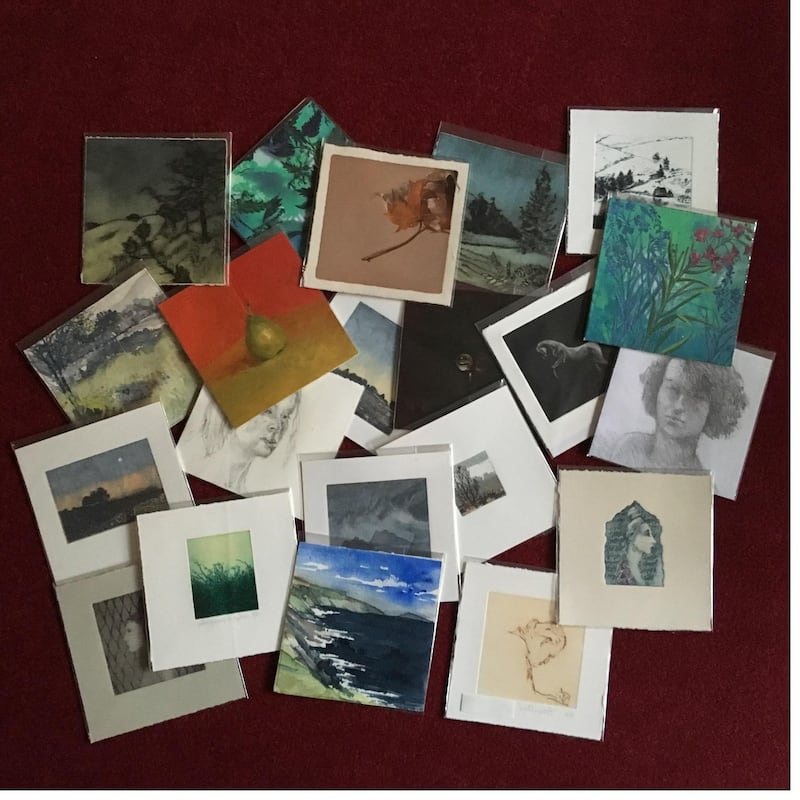Discreetly located amid the Georgian elegance of Lower Fitzwilliam Street, Dublin’s United Arts Club became something like the lost city of Atlantis during the years of the boom. Some would say they had known people who had seen it. Others had heard about it but doubted its existence. Only a small number would claim to have actually been there.
Recent decades have not been good for Dublin’s private clubs. The United Services Club on St Stephen’s Green closed its doors. So did the Hibernian Club. The Friendly Brothers of St Patrick, committed to the elimination of duelling, concluded that with their noble purpose fully attained (in the 1990s) they should pass into history.
But the United Arts Club lived on, if sometimes at a low ebb. Established in 1907, its founding members were a cross-section of that extraordinary generation of Irishmen and women that wanted to drive a cultural renaissance for their country, alongside the political and social transformation that was now in train. They included William Butler Yeats, Augusta Gregory, Count Casimir Markievicz and his revolutionary wife, Constance Gore-Booth, George “AE” Russell, Ellie Duncan and others. The aim of the club was to promote the nine arts in Ireland: literature, music, dance, theatre, drawing, painting, drama, film and good conversation.
Dublin had been well abreast of other cities across the United Kingdom in the establishment of great cultural institutions, largely through the initiatives of the Royal Dublin Society. But the lack of what would probably now be called “a safe space” for artists and those with an interest in the arts, to commingle, exchange ideas and, indeed, to socialise, marked it out from other metropolitan centres. The Arts Club at Mayfair in London had been founded in 1863. The famous Chelsea Arts Club opened in 1891. The Scottish Artists’ Club came into existence in Edinburgh in 1873.
The establishment of Dublin’s United Arts Club, with premises at 3 Upper Fitzwilliam Street, was partly a spin-off of the revival movement. But it was also in part to be a counterweight to the existing private clubs which were all in one way or another tied into the pro-British establishment.
The club's full range of societies and activities are active once again. They include the oldest chess club in Ireland
The Kildare Street Club was for lawyers and wealthy landowners. The University Club was for people connected with Trinity College. The United Services was for military officers and Dublin Castle officials. The Stephen’s Green Club, whose founder members included Daniel O’Connell, was once disparagingly categorised as serving “Catholics in trade”. The Arts Club, as it became known, was definitely not for any of these. And the sort of people who joined the Arts Club were certainly never going to be comfortable in any of the other places.
Down the decades it was a venue in which visiting writers, artists and others would find inexpensive accommodation, food and – let there be no dissembling – drink.

It was where striving painters and sculptors could show their work without having to pay stiff commission fees to galleries. A place where writers and poets could lay out their stalls. It was a place to which journalists, many, indeed, of this Irish Times parish, could repair after their copy had gone to print, for a few quiet drinks, without running the risk of encountering politicians or high officers of state.
Unhappily, much of that vitality seeped away as the Celtic Tiger impacted on so many aspects of Irish society. Membership numbers dropped, with consequent problems for financing. The club’s cultural programmes had to be attenuated.
But a renewal has been under way for some time now. Membership is increasing and the club has also adopted a policy of welcoming non-members who simply want to drop in to view an exhibition, to have a drink or to use the dining facilities. A new committee, with Thomas Ryan RHA as president and Annette Durkan as honorary secretary, has originated an exciting and varied programme of events for the year ahead. The elegant dining room and the bedrooms have been tastefully refurbished. The function room, originally the drawing room, running the full width of the house, has been meticulously restored and can be used for anything from lectures to civil ceremonies.
The club’s full range of societies and activities are active once again. They include the oldest chess club in Ireland; the Hellenic Society; the Byron Society; the Wagner Society; the Mythic Society; the Chinese Society; the Opera Circle and the Bankers’ Bridge Club.
For anyone interested in walking in the footsteps of the artists, or savouring the atmosphere of this remarkable Dublin institution, next Friday, November 23rd, affords an opportunity. The club will host its Small Works exhibition from noon until 5.30pm, with sales starting at 6pm.
Works by notable artists will be available for purchase at what have been described as nominal prices. Featured artists will include Neil Shawcross, Jackie Stanley, James English, Mary Burke, Brian Palm, Margo Banks, Marie-Louise Martin, Raphael Hynes, Carey Clarke, Brian Gallagher, Louise Leonard and Abigail O’Brien.
Here’s a real opportunity to solve Christmas gift problems. And at the same time to connect in a special way to our cultural and artistic history.
All are welcome.









